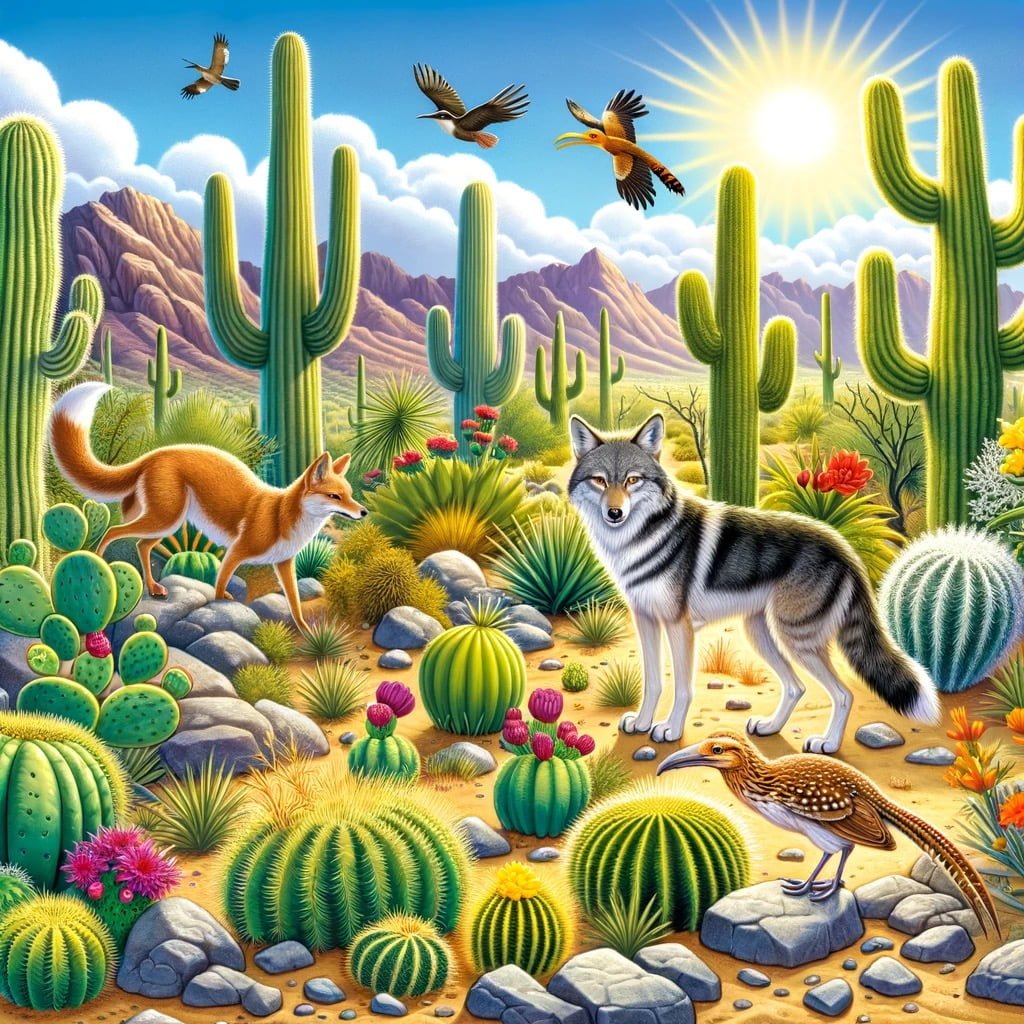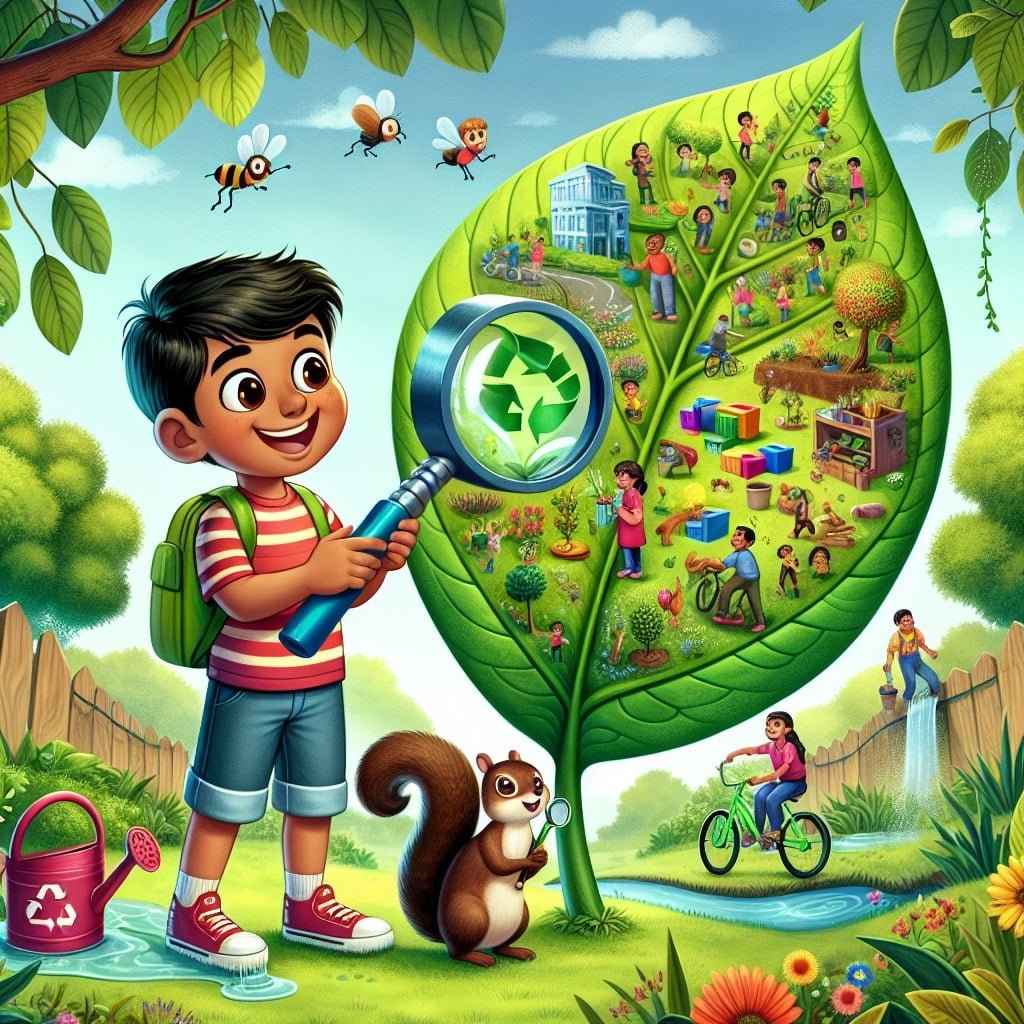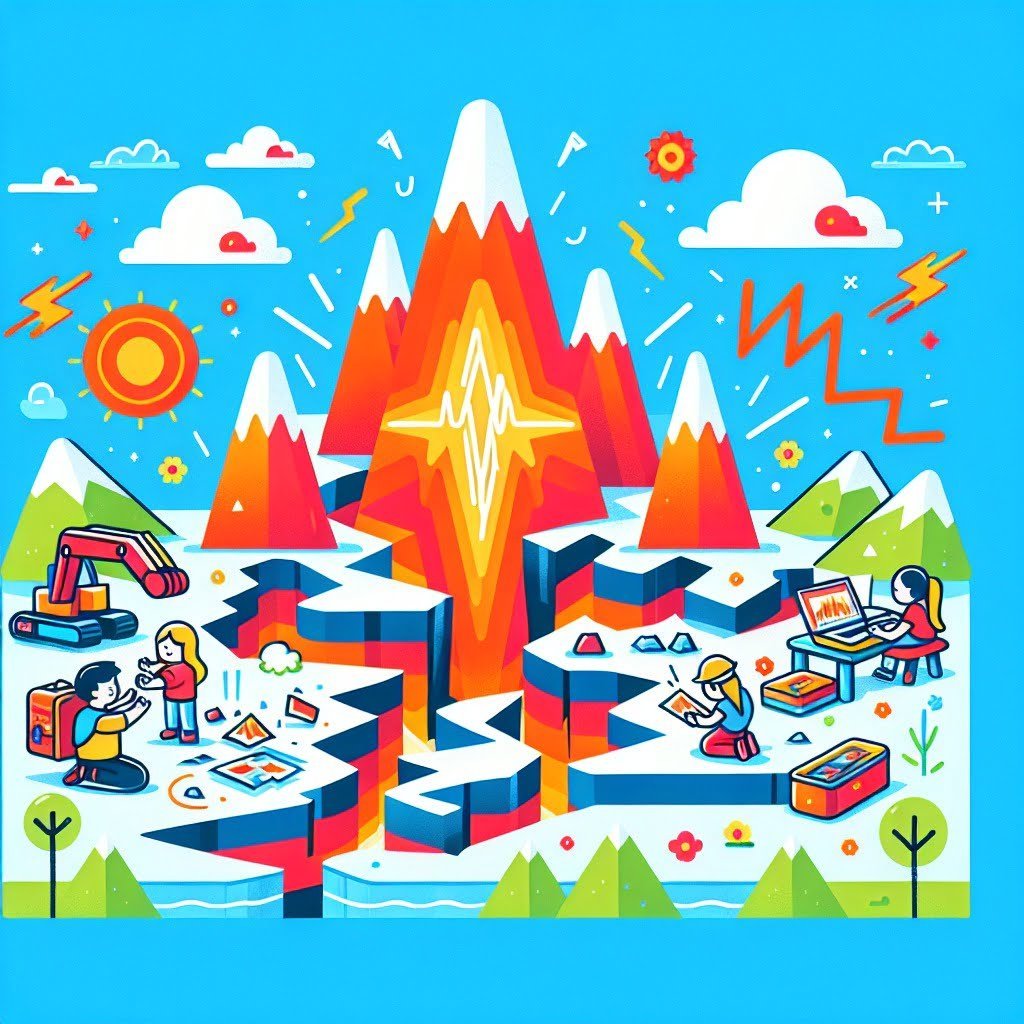Welcome to the exciting world of Volcano Facts For Kids! Whether you’re a younger reader fascinated by the fiery explosions of hot lava or an older reader intrigued by the geological forces shaping our planet, this blog is the perfect place to learn all about the incredible power of volcanoes. From underwater eruptions to the creation of new land formations, from the Ring of Fire’s volcanic activity to the devastating history of Mount Vesuvius, each post is packed with fun and educational facts for kids of all ages. So join us on this thrilling journey as we explore the fascinating role volcanoes play in shaping the Earth’s landscape and discover the awe-inspiring wonders of these natural wonders. Get ready to delve into the explosive world of Volcano Facts For Kids!
Volcano Facts For Kids
1. Volcanoes Can Erupt Hot Lava

For younger kids: Volcanoes sometimes explode with hot, glowing lava!
For older kids: During eruptions, volcanoes can spew molten rock called lava, which can flow down their slopes at incredibly high temperatures.
Detailed explanation:Volcanoes are fascinating geological features that capture the imagination of people of all ages, including children. One of the most intriguing facts about volcanoes, especially for kids, is that they can erupt hot lava. This molten rock is superheated by the intense pressure and heat beneath the Earth’s surface, and when a volcano erupts, it can flow out of the crater and down the sides of the mountain.
The sight of glowing red lava flowing down a volcano’s slopes is both mesmerizing and terrifying. Kids are often fascinated by the power of nature that is on display during a volcanic eruption. The lava can travel at different speeds, depending on its viscosity and the slope of the volcano. Some lava flows slowly, allowing people to escape danger, while other times it can move rapidly and destroy everything in its path.
In addition to flowing lava, volcanoes can also expel ash, rocks, and gases during an eruption. These volcanic materials can be dangerous to people living nearby, which is why it is important to monitor active volcanoes and have evacuation plans in place for at-risk areas.
Learning about volcano facts for kids can be a fun and educational experience. It provides an opportunity to understand the powerful forces at work beneath the Earth’s surface and how they can shape the landscape in dramatic ways. By studying volcanoes, children can also learn about topics such as geology, plate tectonics, and natural disasters.
In conclusion, the fact that volcanoes can erupt hot lava is just one of the many fascinating aspects of these dynamic landforms. Exploring more volcano facts for kids can help spark a lifelong interest in science and the natural world.
Volcano Facts For Kids
2. Some Volcanoes Are Under the Ocean
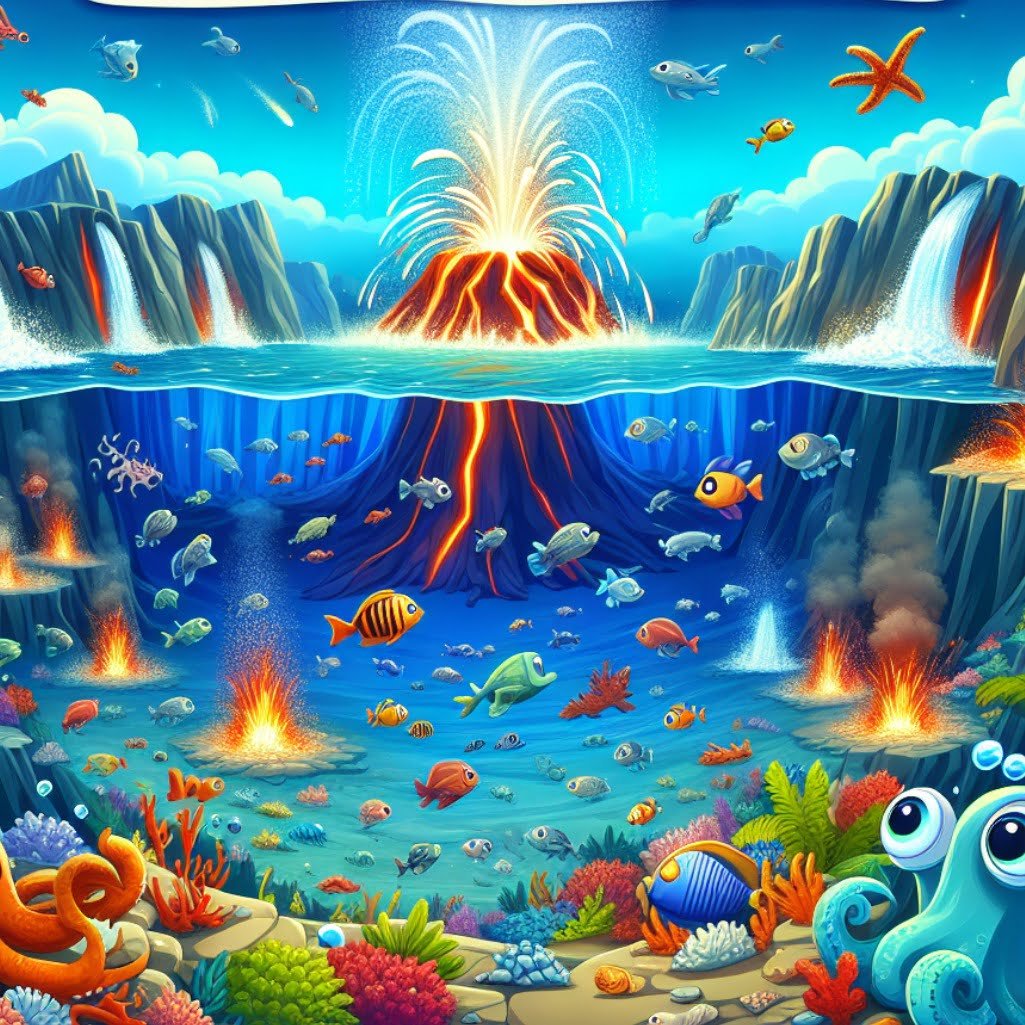
For younger kids: Underwater volcanoes exist deep beneath the ocean waves!
For older kids: Submarine volcanoes, also known as underwater volcanoes, are located beneath the ocean’s surface and can create new islands and landmasses.
Detailed explanation:One fascinating fact about volcanoes, especially for kids, is that some of them are located under the ocean. These underwater volcanoes, also known as seamounts or submarine volcanoes, are just as active and powerful as their counterparts on land. In fact, they play a crucial role in shaping the ocean floor and have a significant impact on marine life.
One of the main reasons why underwater volcanoes are often overlooked is because they are hidden from view beneath the vast expanse of the ocean. However, these volcanic structures are actually quite common, with estimates suggesting that there are thousands of them scattered throughout the world’s oceans.
Underwater volcanic activity results from the movement of the Earth’s tectonic plates, which can cause magma to rise to the surface and erupt underwater. This process creates new landforms and structures on the ocean floor, such as underwater mountains and ridges. It also releases gases and minerals into the water, which can have both positive and negative effects on marine ecosystems.
Studying underwater volcanoes is important for scientists to better understand volcanic activity and its impacts on the environment. By exploring these underwater landscapes, researchers can learn more about the geology of the ocean floor and the unique ecosystems that thrive around these volcanic habitats.
In conclusion, while many people may think of volcanoes as towering mountains with billowing smoke and lava flows, it is important to remember that some of these powerful geological features are hidden beneath the surface of the ocean. Understanding the role of underwater volcanoes is crucial for gaining a more complete picture of Earth’s dynamic and ever-changing geology.
Volcano Facts For Kids
3. Volcanoes Can Create New Land

For younger kids: Some volcanoes can make new mountains and land!
For older kids: Volcanic eruptions can produce new land formations like islands, mountains, and landmasses, contributing to the Earth’s diverse geography.
Detailed explanation:Volcanoes are fascinating geological features that have the ability to create new land. This process is known as volcanic activity and occurs when molten rock, ash, and gases are expelled from the Earth’s crust through a vent or opening in the surface.
One way in which volcanoes create new land is through the eruption of lava flows. When magma, which is molten rock beneath the Earth’s surface, erupts onto the surface and cools, it solidifies into solid rock. This process can occur both on land and underwater, with underwater volcanic activity creating new landmasses such as islands and underwater mountain ranges.
Another way volcanoes create new land is through the accumulation of ash and volcanic debris. When a volcano erupts violently, it can spew ash, rocks, and other materials into the air. These materials can then settle back down onto the surface, building up layers of volcanic rock over time. Eventually, these layers can form new landmasses, contributing to the growth of existing land masses or creating entirely new islands.
Overall, the ability of volcanoes to create new land is a testament to the dynamic and ever-changing nature of our planet. It is important for kids to learn about volcano facts because understanding these geological processes can help us better appreciate the forces that shape our world. By studying volcanoes, scientists can also gain insights into Earth’s history and how landforms have evolved over time. Volcano facts for kids can inspire a sense of wonder and curiosity about the natural world, encouraging them to explore and learn more about the incredible processes that have shaped our planet.
Volcano Facts For Kids
4. The Ring of Fire Has Many Volcanoes

For younger kids: The Ring of Fire is a place with lots of powerful volcanoes!
For older kids: The Ring of Fire is a region in the Pacific Ocean where many earthquakes and volcanic eruptions occur due to tectonic plate movements.
Detailed explanation:One of the most fascinating aspects of the Earth’s geology is the presence of the Ring of Fire, a horseshoe-shaped belt that encircles the Pacific Ocean and is home to a vast number of active volcanoes. This region, also known as the circum-Pacific belt, spans over 25,000 miles and is where a majority of the world’s earthquakes and volcanic eruptions occur.
For kids curious about volcanoes, the Ring of Fire offers a playground of geological wonders. This area is dotted with more than 75% of the Earth’s active and dormant volcanoes, making it a hotspot for volcanic activity. These volcanoes are often clustered together in chains, creating stunning landscapes and geothermal features that captivate both scientists and curious minds alike.
The presence of so many volcanoes in the Ring of Fire can be attributed to the movement of tectonic plates along the Pacific Ring of Fire. The Pacific Plate, along with several other plates, are continuously interacting with each other, leading to subduction zones where one plate is forced beneath another. This subduction process creates intense pressure and heat, resulting in the formation of magma chambers beneath the Earth’s crust. When these chambers erupt, they give rise to the spectacular volcanic eruptions that have shaped the landscapes of countries like Japan, Indonesia, and the United States.
Overall, the Ring of Fire serves as a constant reminder of the dynamic and ever-changing nature of our planet’s geology. For kids interested in learning more about volcanoes, exploring the Ring of Fire and its many volcanic wonders is sure to spark their curiosity and deepen their understanding of these geologic marvels. Volcano Facts For Kids will continue to amaze and inspire young minds for generations to come.
Volcano Facts For Kids
5. Volcanoes Can Launch Ash Clouds

For younger kids: Volcanoes can shoot out big clouds of ash into the sky!
For older kids: Erupting volcanoes can release towering ash clouds containing tiny volcanic glass particles and minerals, impacting air travel and weather patterns.
Detailed explanation:One fascinating aspect of volcanoes, especially for kids, is the ability to launch ash clouds into the atmosphere. When a volcano erupts, it spews out not only lava and rocks but also ash and other volcanic gases. These ash clouds can rise high into the sky, reaching several kilometers above the volcano itself.
The ash clouds from a volcanic eruption can have significant impacts on the environment and human health. The tiny ash particles can travel long distances, carried by the wind, and settle on the ground far away from the volcano. These ash particles can cause respiratory issues in humans and animals, as well as damage crops and machinery.
One famous example of ash clouds from a volcano is the 2010 eruption of Eyjafjallajökull in Iceland, which disrupted air travel across Europe for several days. The ash clouds from this eruption were carried by the prevailing winds, affecting airspace thousands of miles away.
Volcanic ash clouds are not only a hazard to human health and modern infrastructure, but they also play a crucial role in shaping the Earth’s climate. The ash particles reflect sunlight back into space, temporarily cooling the Earth’s surface. This cooling effect can last for months or even years, depending on the magnitude of the eruption.
In conclusion, the ability of volcanoes to launch ash clouds is a captivating aspect of these natural phenomena, providing valuable insights into Earth’s processes and highlighting the importance of understanding and studying volcanoes. Volcano Facts For Kids can help children appreciate the power and complexity of these geological wonders.
Volcano Facts For Kids
6. Mount Vesuvius Destroyed Pompeii

For younger kids: Mount Vesuvius covered an ancient city with ash!
For older kids: In AD 79, Mount Vesuvius erupted, burying the Roman city of Pompeii under layers of ash and preserving it for centuries.
Detailed explanation:One of the most famous events in history involving a volcano is the destruction of the ancient Roman city of Pompeii by the eruption of Mount Vesuvius. This catastrophic event occurred in 79 AD and has since become a cautionary tale about the power and unpredictability of volcanoes.
Mount Vesuvius is located in modern-day Italy and is considered one of the most dangerous volcanoes in the world due to its proximity to densely populated cities like Naples. When it erupted nearly 2,000 years ago, it spewed ash, rocks, and hot gases into the air, covering the city of Pompeii in a thick layer of ash and burying it under debris.
The eruption of Mount Vesuvius was so sudden and intense that many residents of Pompeii were caught off guard and perished in the disaster. The archaeological remains of the city have provided valuable insights into ancient Roman life, as the ash preserved buildings, artifacts, and even human remains.
For kids learning about volcanoes, the story of Mount Vesuvius and Pompeii serves as a vivid example of the destructive power of these natural phenomena. It highlights the importance of understanding the signs of an impending eruption and being prepared to evacuate quickly in order to stay safe.
In conclusion, Mount Vesuvius destroying Pompeii is a poignant reminder of the impact that volcanic eruptions can have on human civilizations. It is a crucial lesson in the study of volcano facts for kids, emphasizing the need for caution and preparedness in the face of such natural disasters.
Volcano Facts For Kids
7. Volcanoes Can Shape the Earth’s Landscape

For younger kids: Volcanoes can change how land looks over time!
For older kids: Volcanic activity plays a significant role in shaping the Earth’s surface, creating mountains, valleys, and other geological features we see today.
Detailed explanation:Volcanoes are powerful geological features that can have a significant impact on shaping the Earth’s landscape. These natural phenomena are capable of dramatically altering the land around them through various processes such as volcanic eruptions, lava flow, and ash deposition.
One way in which volcanoes shape the Earth’s landscape is through the accumulation of volcanic materials. When a volcano erupts, it releases lava, ash, and other volcanic debris onto the surrounding area. Over time, these materials can build up and form new land formations, such as lava plateaus, volcanic islands, and volcanic mountains. For example, the Hawaiian Islands were formed by volcanic activity over millions of years, with each island representing a different stage in the volcanic process.
In addition to building up new land formations, volcanoes can also reshape existing landscapes. For instance, when a volcano erupts, it can carve out deep craters and valleys in the surrounding terrain. The explosive force of a volcanic eruption can also trigger landslides and mudflows, further altering the topography of the area.
Overall, the shaping of the Earth’s landscape by volcanoes is a dynamic and ongoing process that has been occurring for millions of years. By studying volcano facts for kids, young learners can gain a greater appreciation for the role that these powerful geological features play in shaping our planet’s surface.
Volcano Facts For Kids
8. Lava Flows Can Be Very Fast
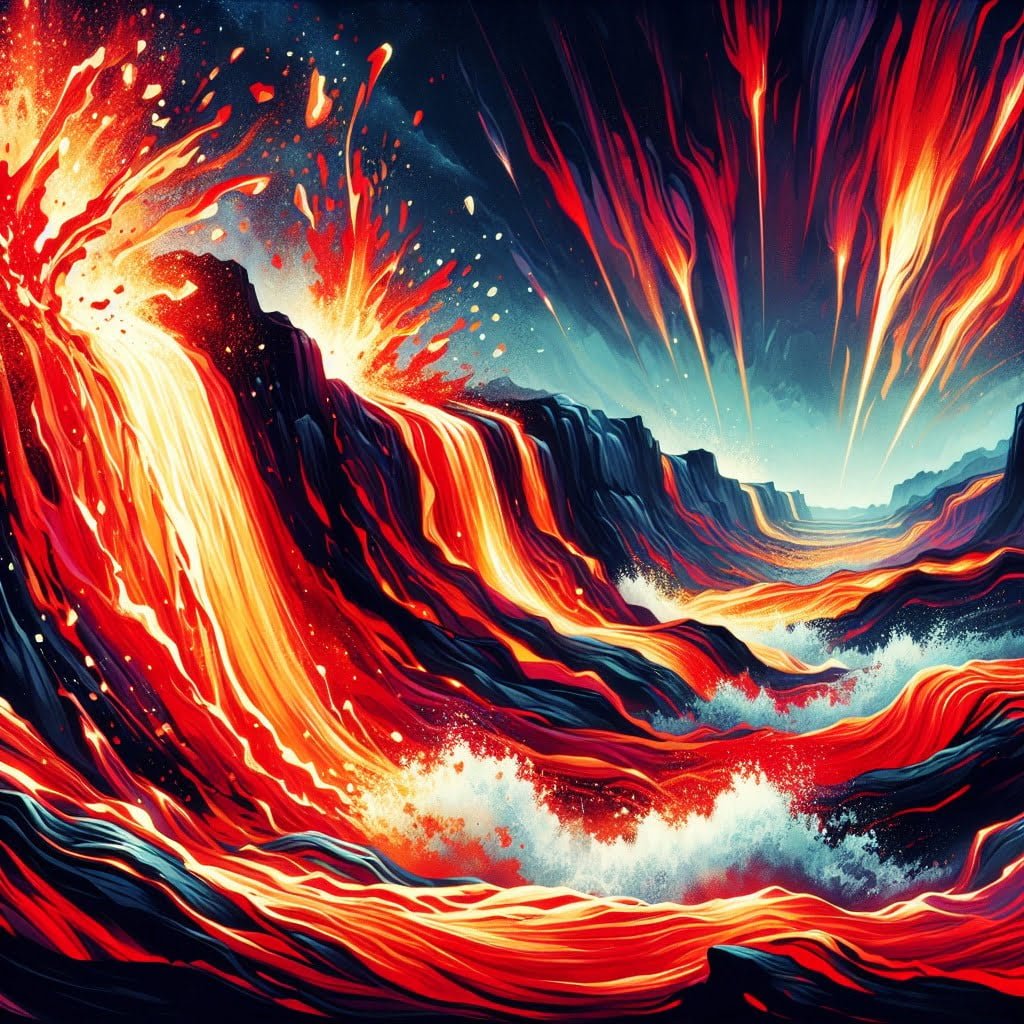
For younger kids: Lava from volcanoes can flow really quickly!
For older kids: Lava streams from volcanic eruptions can move at surprising speeds, rapidly covering vast distances and causing destruction in their path.
Detailed explanation:Volcano Facts For Kids: Lava flows are a fascinating and often terrifying aspect of volcanic eruptions. One of the most surprising facts about lava flows is that they can actually move very quickly. While we may think of lava as flowing slowly like a thick, viscous liquid, in reality, it can travel at remarkable speeds.
One of the key factors that determine how fast lava flows move is the type of lava involved. There are different types of lava, with varying levels of viscosity. For example, basaltic lava, which is the most common type, tends to be relatively fluid and can move quickly. On the other hand, more viscous lavas like andesitic or rhyolitic lava may move more slowly.
Another important factor that influences the speed of lava flows is the steepness of the terrain. Lava flows move more quickly downslope, as gravity helps to pull the molten rock downhill. This is why volcanic eruptions on steep slopes can be particularly dangerous, as the lava can rapidly descend and engulf anything in its path.
The speed of a lava flow can vary greatly, ranging from a slow crawl of just a few meters per hour to a rapid advance of several kilometers per hour. In some extreme cases, lava flows have been known to travel at speeds of over 60 miles per hour, making them almost impossible to outrun.
Overall, the fact that lava flows can be very fast highlights the unpredictable and destructive nature of volcanic eruptions. It serves as a reminder of the incredible power of nature and the importance of understanding and respecting volcanic activity.
Volcano Facts For Kids
9. Volcanic Craters Hold Lava Lakes

For younger kids: Some volcanoes have lakes filled with glowing lava!
For older kids: Certain volcanic craters contain molten lava lakes that emit a mesmerizing glow, showcasing the immense heat within the volcano.
Detailed explanation:Volcanoes are powerful geological structures that can be both fascinating and destructive. One interesting fact about volcanoes, particularly for kids, is that some volcanic craters hold lava lakes. These lava lakes are breathtaking displays of nature’s raw power.
When a volcano erupts, it releases molten rock, ash, and gases from deep within the Earth. As this molten rock, known as lava, reaches the surface, it often collects in the volcano’s crater. In some cases, the lava continues to pool in the crater, forming a lava lake.
Lava lakes are mesmerizing to watch, as the molten rock churns and bubbles, creating a spectacular display of light and heat. These lakes can range in size from a few meters to several kilometers across. One famous example of a lava lake is found at the summit of Mount Erebus in Antarctica.
The formation of a lava lake is dependent on several factors, including the viscosity and temperature of the magma, as well as the shape and size of the volcano’s crater. In some cases, the lava lake can be relatively stable, while in others, it may overflow the crater walls, leading to a larger eruption.
Overall, volcanic craters holding lava lakes are a striking example of the Earth’s geological processes in action. For kids interested in learning more about volcanoes, exploring the phenomenon of lava lakes can be a captivating introduction to the awe-inspiring world of volcanic activity.
Volcano Facts For Kids
10. Iceland Has Many Volcanoes
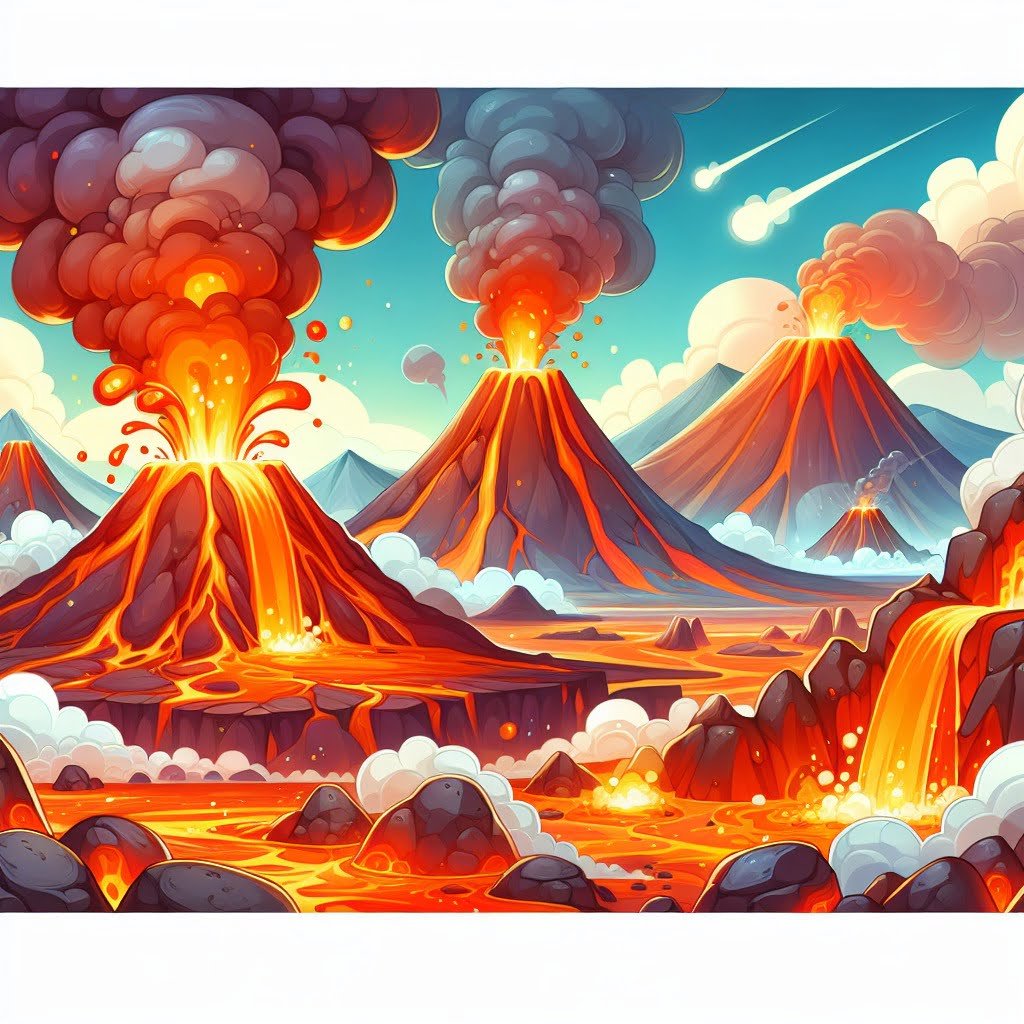
For younger kids: Iceland is home to numerous volcanoes that can spout hot lava!
For older kids: Iceland sits on the Mid-Atlantic Ridge, resulting in a high concentration of active volcanoes that often erupt and shape the island’s unique landscape.
Detailed explanation:Iceland is a country known for its stunning natural landscapes, including its numerous volcanoes. In fact, Iceland is home to over 30 active volcano systems, making it a hotspot for volcanic activity. One of the most famous volcanoes in Iceland is Eyjafjallajökull, which erupted in 2010 and caused widespread disruption to air travel across Europe.
Volcanoes in Iceland are typically formed as a result of the country’s location on the Mid-Atlantic Ridge, a divergent tectonic boundary where the North American and Eurasian plates are moving apart. This movement creates magma beneath the Earth’s crust, leading to volcanic eruptions. The volcanic activity in Iceland has also led to the formation of distinctive landforms such as lava fields, craters, and geothermal hot springs.
For kids interested in learning more about volcanoes, Iceland is a fascinating destination to explore. They can visit sites such as the Volcano House in Reykjavik, where they can learn about the science behind volcanic eruptions and the history of Iceland’s volcanic activity. Kids can also witness the powerful forces of nature at work by visiting active volcanoes such as Hekla or Katla.
In conclusion, Iceland’s many volcanoes make it a unique and captivating destination for both kids and adults alike. By learning about volcano facts for kids, children can gain a deeper understanding of the Earth’s geology and the powerful forces that shape our planet.
Did you know?
Did you know that volcanoes can create new islands and land through their powerful eruptions?
Summary of Volcano Facts For Kids
Are you ready to explore the fascinating world of volcanoes? In this engaging blog post, you will discover ten amazing volcano facts suitable for kids of all ages. From the powerful eruptions that can launch hot lava and ash clouds into the sky to the creation of new land formations like islands and mountains, volcanoes play a significant role in shaping the Earth’s landscape. Learn about underwater volcanoes, the Ring of Fire, and the destructive power of Mount Vesuvius on the ancient city of Pompeii. Find out how fast lava flows can move and why Iceland is a hotspot for volcanic activity. With colorful images and fun facts, this blog post will ignite your curiosity and make you appreciate the awe-inspiring forces of nature. Dive into the world of volcanoes and expand your knowledge of these dynamic geological wonders!
Sources and additional information for Volcano Facts For Kids
WikipediaBritannicaEnvironmental Protection Agency (EPA)National Oceanic and Atmospheric Administration (NOAA)The Nature ConservancyWorld Wildlife FundEarth Day NetworkGreenpeace InternationalJane Goodall InstituteEnvironmental Protection Agency (EPA)World Wildlife Fund – ConservationNature ConservancyGreenpeaceUnited Nations Environment Programme (UNEP)Conservation InternationalEarthwatch InstituteEnvironmental Defense FundSierra Club

